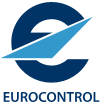EUROCONTROL Data Snapshot on Overload on the use of Surveillance Radar
Eurocontrol's 10th Data Snapshot published

Radar is an essential tool for air traffic controllers (ATC), giving them the live picture of the situation in the air, so that they can maintain separation between aircraft, that most fundamental of safety roles. 'Primary' radar emits signals and listens for a returning signal, bounced off aircraft. An aircraft needs to do nothing for this, but as a result the air traffic controller has only a most basic picture of where there are aircraft.
Today ATC mainly relies on 'secondary' radar. This provides aircraft identification as well as an accurate 3-D position. The more sophisticated 'Mode S' (S for Select) secondary surveillance radar sends queries to each aircraft. The aircraft returns either a short reply with basic information or a long reply with additional data such as heading, climb rate, intended altitude etc. This additional data has been key to improving safety. For example, intended altitude enables detection and hence reduction of level busts, i.e aircraft deviating from the flight level assigned by the controller.
The equipment on the aircraft, called a 'transponder', is designed to handle a limited number of queries and replies, for example, 16 long replies per second. That's more than enough for the controllers working directly with the aircraft. But in some parts of Europe, aircraft are interrogated by up to 40 Mode S radars from many States, all updating their picture of traffic. This presents a major risk of corrupting the ATC picture.
We deployed a network of passive stations to monitor the real activity of transponders. The system shows that transponders are overloaded, for example transmitting long replies up to 30 times per second (purple areas on the map), about twice their specified performance. This overload could mean that the one controller in charge of the aircraft isn't getting the necessary information that he or she needs. In the worst case it could even result in the complete disappearance of the aircraft from the controller display, as already happened in central Europe in June 2014.
Optimisation of the surveillance infrastructure would improve safety, and reduce both costs and the carbon footprint. We are working with others across the industry to achieve this.



.png)



.jpg)

Comments
There are no comments yet for this item
Join the discussion